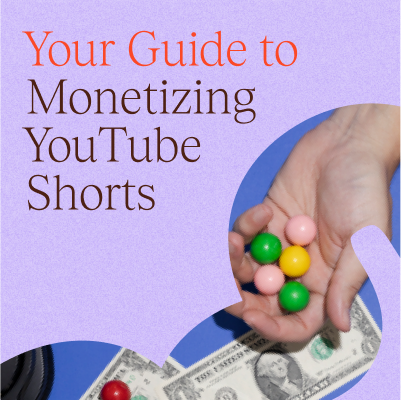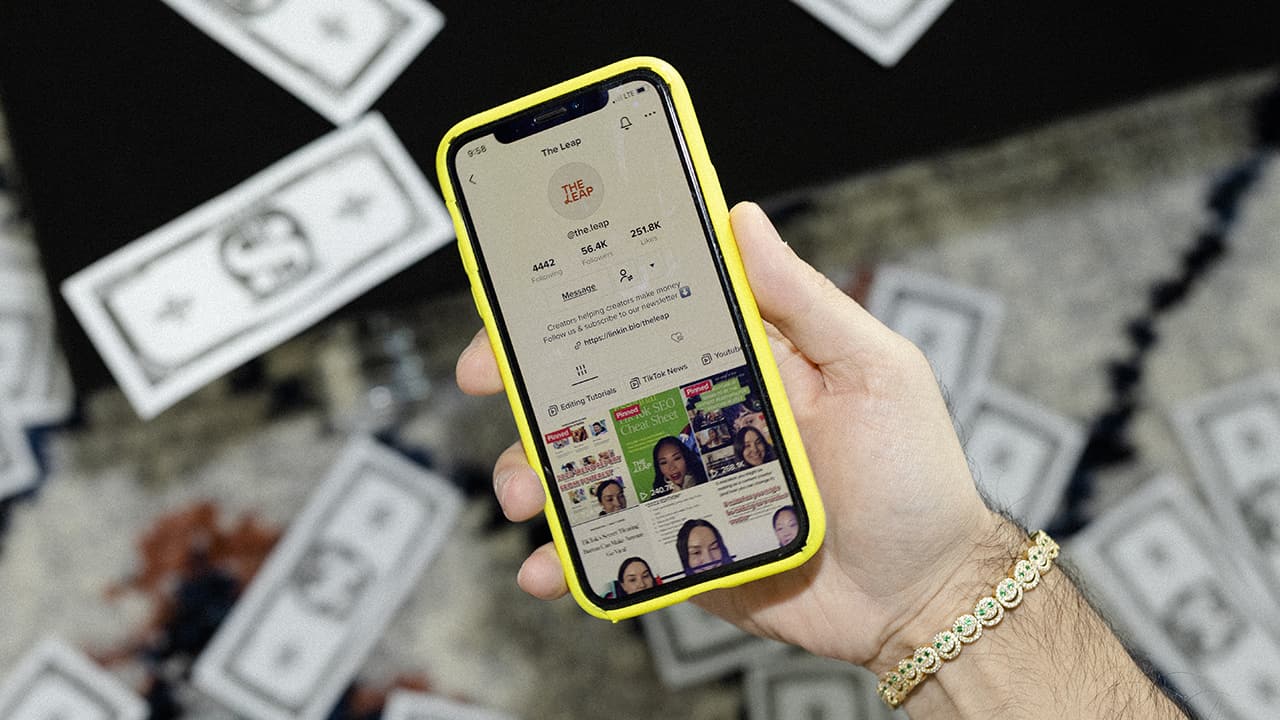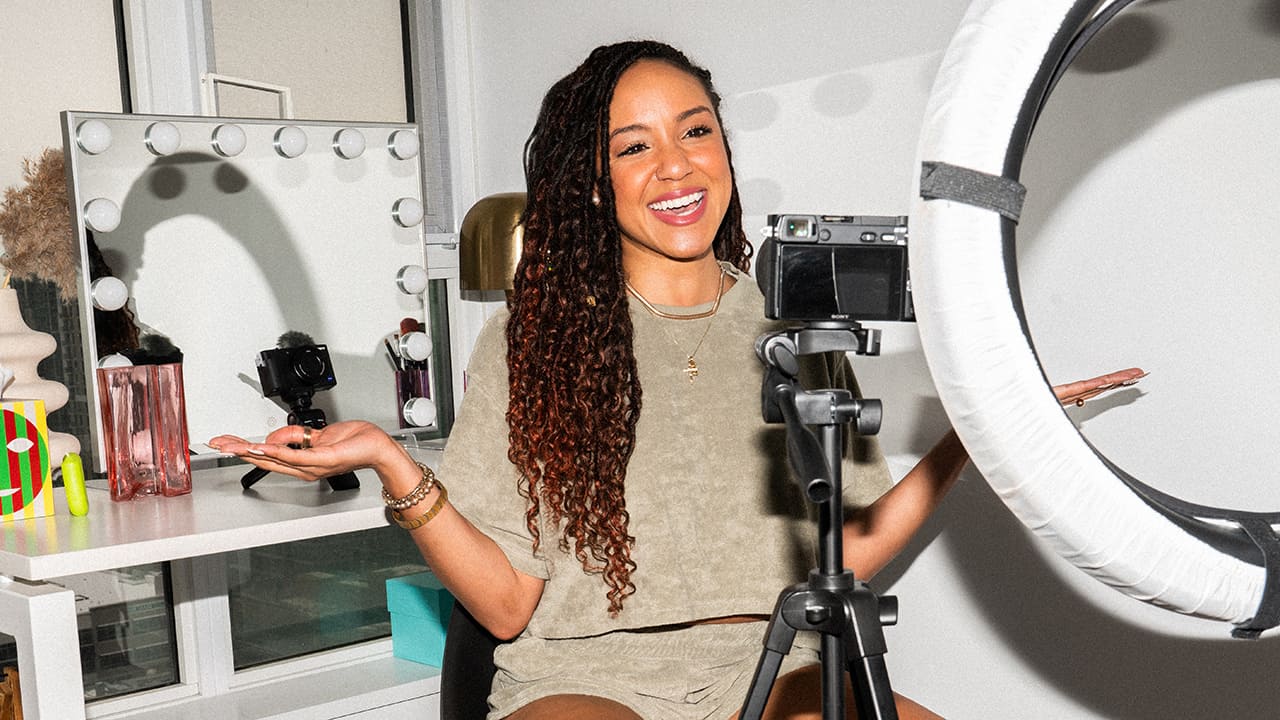If you’re a creator, especially one specializing in short-form content, you’re probably aware of YouTube Shorts. These vertical, short-form videos are up to 60 seconds long. And essentially, they are YouTube’s attempt at competing with TikTok.
YouTube Shorts bring in billions of views daily. Naturally, many creators are wondering how to monetize them. Turns out, there’s more than one way to do it.
Read on as we dive into the different ways you can monetize YouTube Shorts.
YouTube Partner Program eligibility
Before getting into the ways you can monetize YouTube Shorts, it’s important to look at the eligibility requirements for the YouTube Partner Program (aka the platform’s hub of creator monetization tools).
First, your Shorts views contribute to your eligibility for the YouTube Partner Program (YPP). To be eligible for all YPP monetization features (including Shorts ad revenue-sharing), you’ll need at least:
- 1,000 subscribers.
- Either 4,000 public watch hours in the last year, or 10 million Shorts views in the last 90 days.
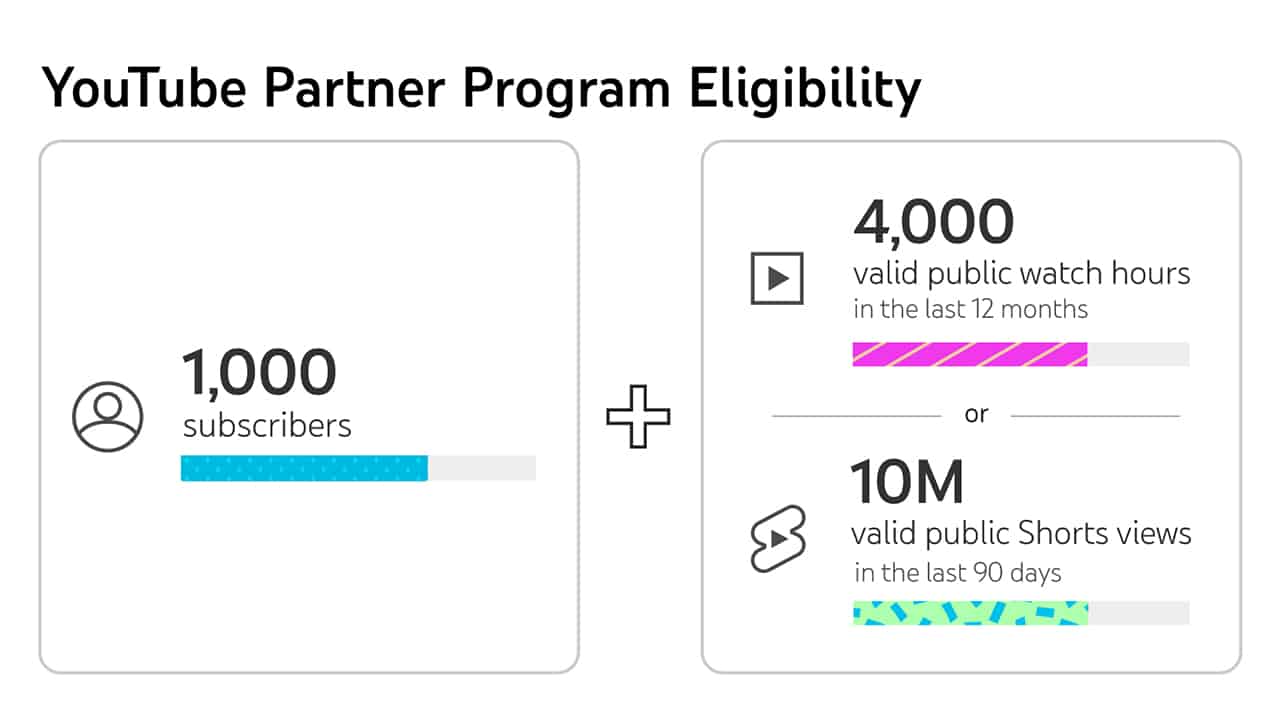
Don’t have 1,000 subscribers? No problem. There’s also a more accessible tier of the YouTube Partner Program, which gives you access to some of its monetization tools — more on that later.
To qualify for this lower tier, you’ll need:
- 500 subscribers.
- 3 public uploads over the last 90 days.
- Either 3,000 public watch hours in the last year, or 3 million Shorts views in the last 90 days.
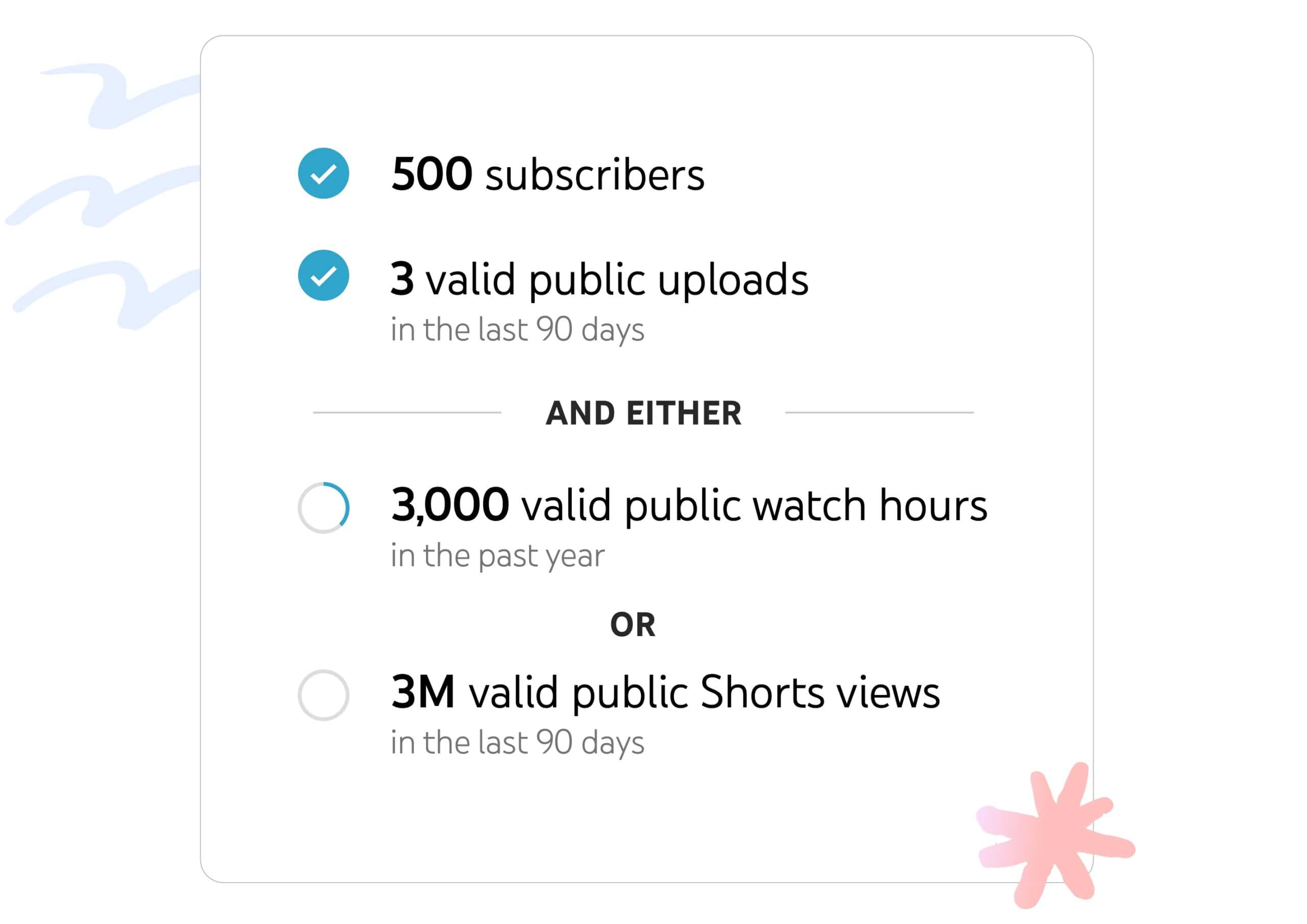
8 ways to monetize YouTube Shorts
From in-app monetization tools to revenue streams beyond the platform itself, here are some of the best ways to make money from YouTube Shorts.
1. Shorts ad revenue-sharing
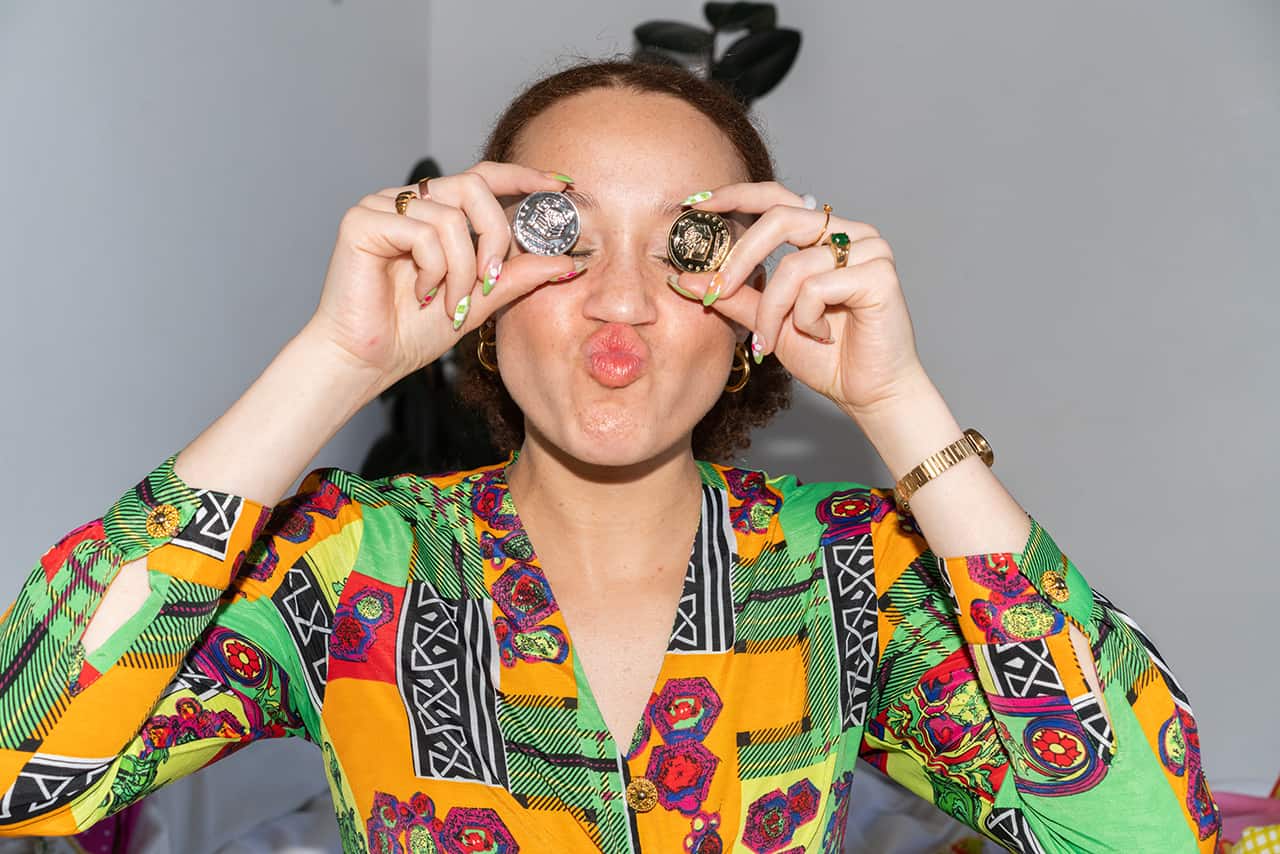
The YouTube Shorts ad revenue-sharing program allows creators to earn money based on their Shorts views. Here’s what YouTube does to determine how much creators earn:
- Pool shareable ad revenue: This is the total revenue generated from ads that run between Shorts. Part of it goes towards rewarding creators, and part of it goes to paying licensing costs for music.
- Calculate creator pool: The creator pool is calculated based on the number of views brought in by Shorts, and music usage in these Shorts.
- Allocate revenue shares to creators: Shares of the creator pool are attributed to monetizing Shorts creators, based on how many views their Shorts got.
- Creator payment: Finally, a creator will receive 45% of the revenue allocated to them.
While you likely won’t make millions off of this revenue-sharing program, it’s a reliable way to start monetizing your YouTube Shorts.
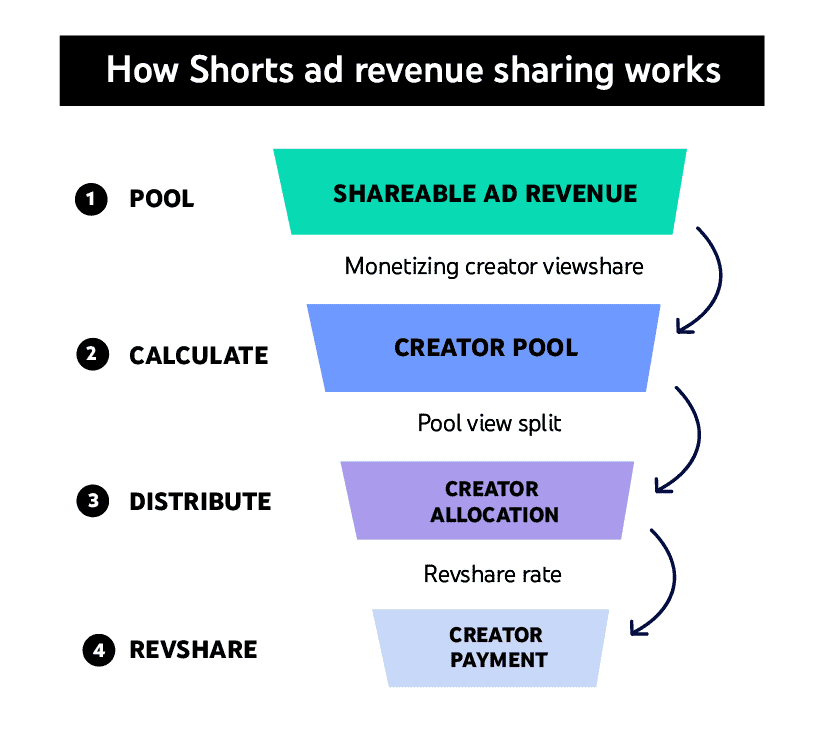
Who’s eligible for YouTube Shorts ad revenue-sharing?
Shorts ad revenue-sharing is only available to creators who meet the higher threshold for the YouTube Partner Program. That means you need a minimum of 1,000 subscribers, and either 4,000 public watch hours in the past year, or 10 million Shorts views in the last 90 days.
If you meet the eligibility requirements, you can join the YouTube Partner Program to start earning. Follow these steps to apply:
- Sign in to YouTube on a computer (alternatively, you can apply on the YouTube Studio app).
- Click your profile picture at the top right, then click YouTube Studio.
- In the left menu, click Earn, then select Apply.
- Click Start to review and Accept the base terms.
- Click Start to set up an AdSense account, or link an existing active one. You should then see In Progress in the Get Reviewed step.
Note: You should hear from YouTube within one month after it’s reviewed your channel. If your application was unsuccessful, don’t worry. You can reapply after 30 days if it’s your first rejection, or after 90 days if you’ve previously applied.
2. YouTube fan funding
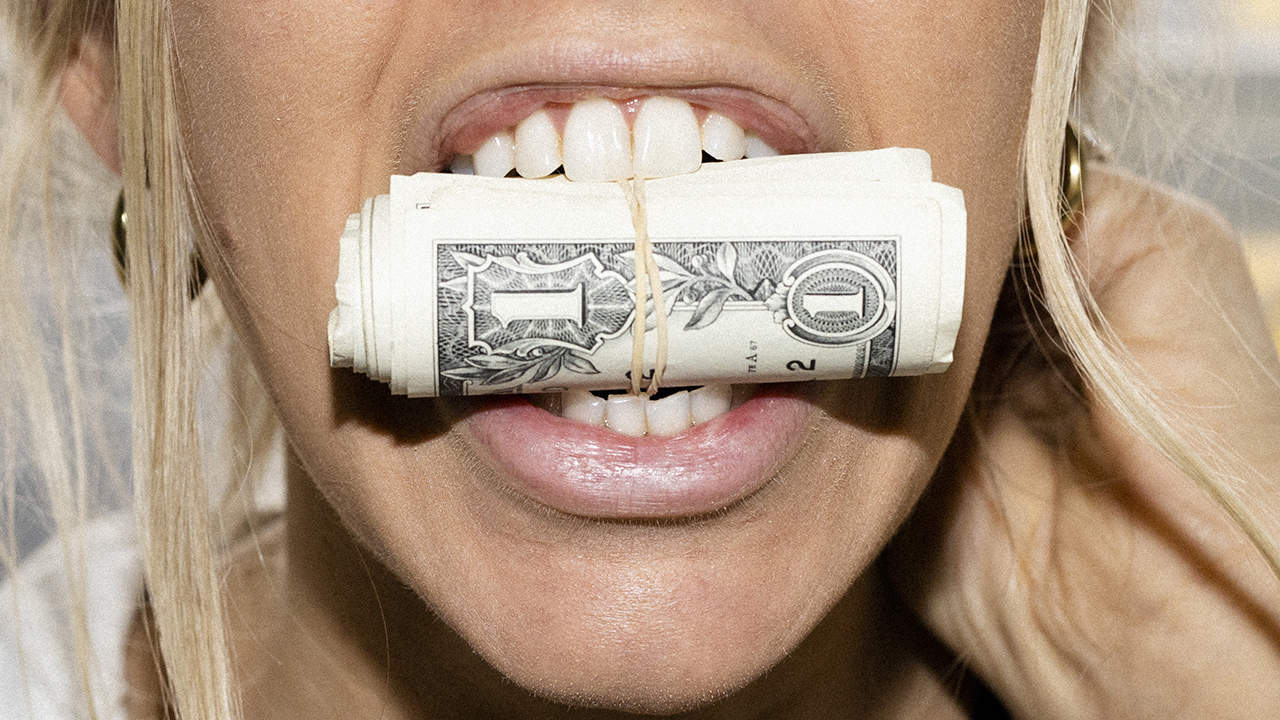
“YouTube fan funding” is an umbrella term referring to three ways your subscribers can contribute to your income as a creator. They include:
- Channel memberships: You can put a paywall in front of more exclusive content and offer perks like loyalty badges.
- Super Chat and Super Stickers: By giving you a small donation, live stream viewers can highlight their messages or get an animated image that appears in a live chat.
- Super Thanks: For a few dollars, viewers can buy a fun animation that appears on your video, and a colorful, customizable comment that goes under your video.
Who’s eligible for YouTube’s fan funding features?
Fan funding is available at both YouTube Partner Program tiers. Whether you have 500 subscribers or 1,000 subscribers, as long as you meet the minimum Shorts views requirements, you can join the YPP and start earning.
3. YouTube Shopping
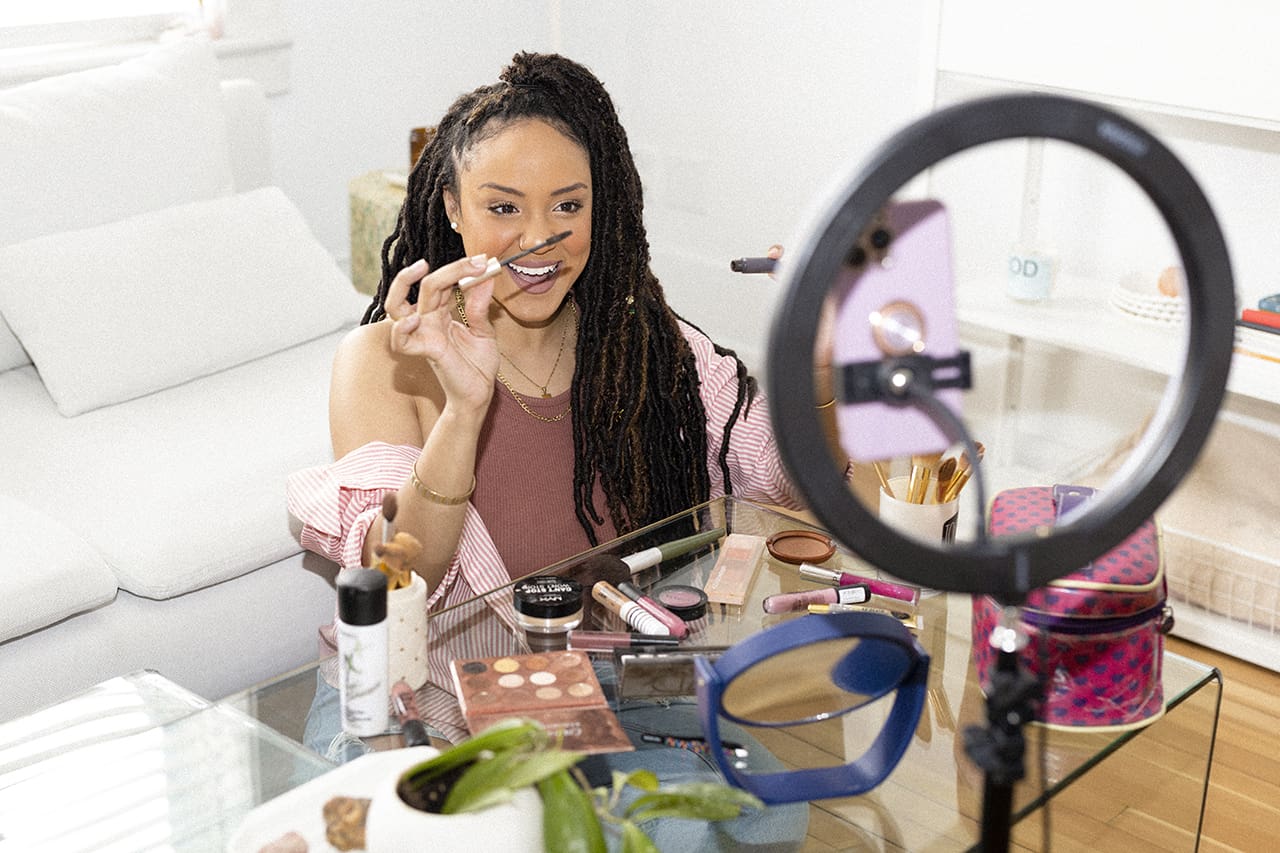
With YouTube Shopping, you can promote a product by tagging it in your Shorts. A product overlay will show on your video, with a link that takes viewers to the store’s website directly.
Not only are you able to sell your products by connecting your store — from platforms like Shopify, Spring, or Spreadshop — to your YouTube account, but you can also promote products from other brands.
Who’s eligible for YouTube Shopping?
YouTube Shopping is available for both YouTube Partner Program thresholds, but with one major difference between the two.
If you meet the requirements for the lower YPP tier, you can only promote your own products on your channel. Whereas if you meet the higher threshold (and more specifically, you have a minimum of 15,000 subscribers), you can promote products from other brands.
Note: Currently, only creators based in the U.S. and South Korea can promote products from other brands using YouTube Shopping features.
4. YouTube Premium
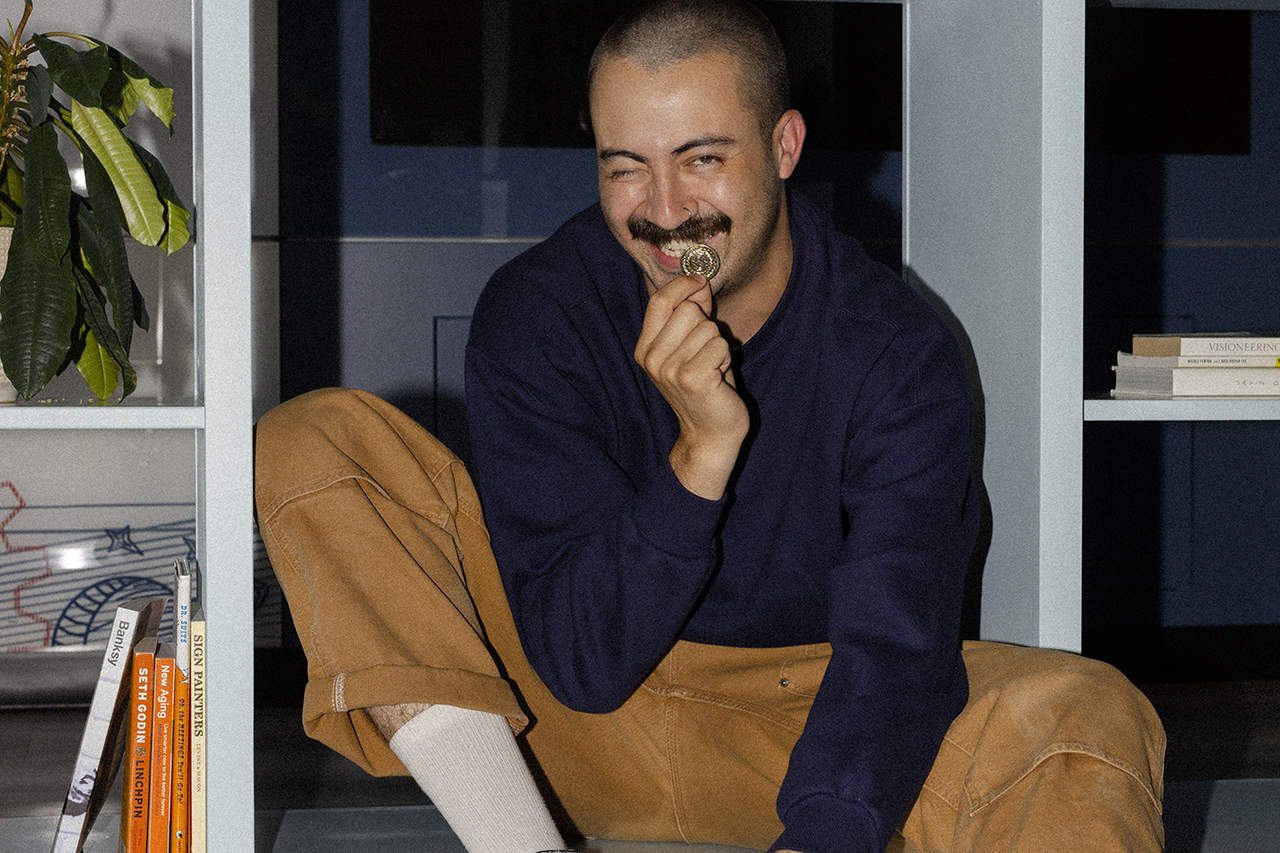
Did you know you can earn money from YouTube Premium (aka the subscription service that provides ad-free access to content on YouTube)?
That’s right, YouTube actually shares the revenue it makes from these paid subscriptions with creators. The platform would distribute the revenue to you monthly, based on the amount of time YouTube Premium members spend watching your content.
Who’s eligible to earn from YouTube Premium?
To start earning from YouTube Premium, you must meet the higher YouTube Partner Program threshold. In other words, you must have at least 1,000 subscribers, and either 4,000 public watch hours in the past year, or 10 million Shorts views in the last 90 days.
5. Sell digital products
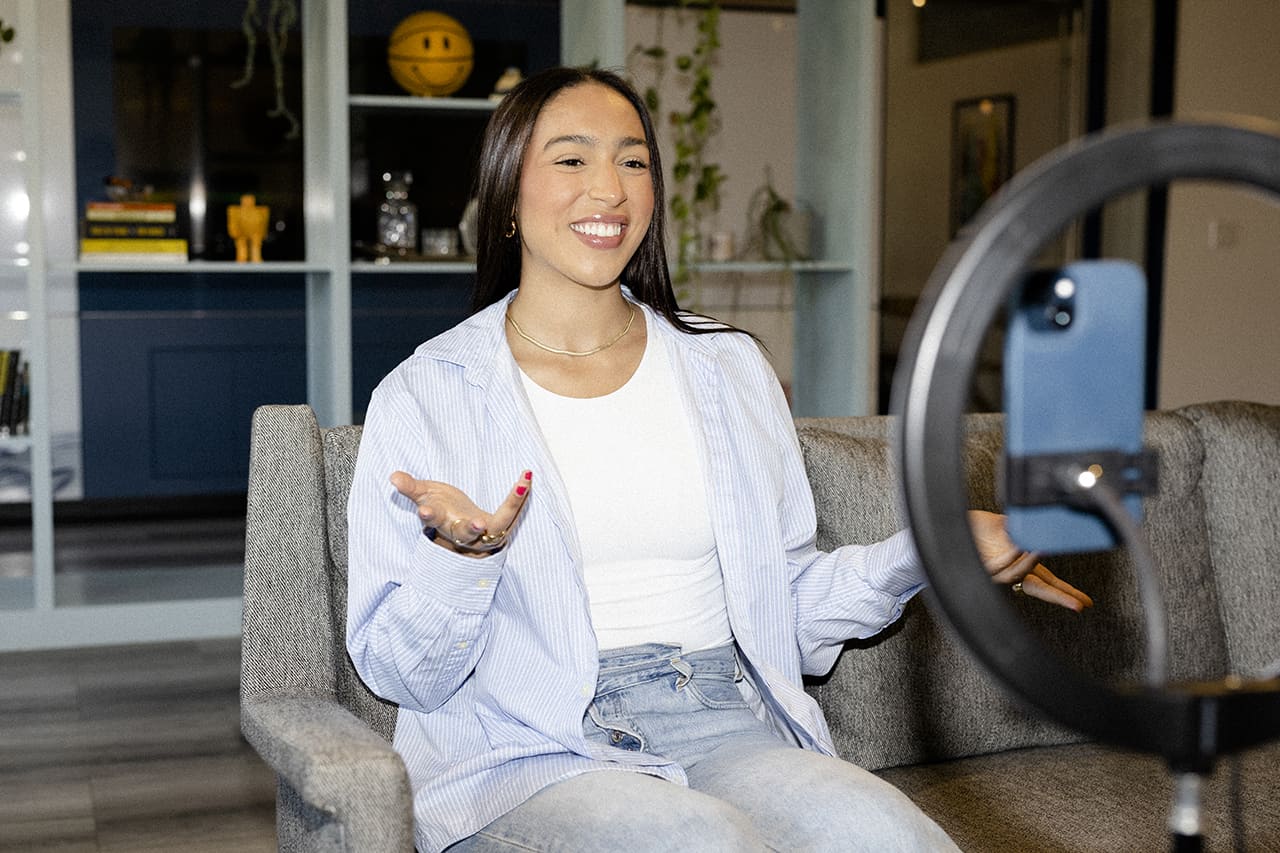
One of the best ways to earn money as a creator is to create and sell digital products — think ebooks, courses, and templates. Why? They don’t cost nearly as much money to produce and deliver as physical products. Additionally, since digital products only need to be created once and can then be sold over and over, they can be a great source of passive income.
Once you’ve built your digital product, you can promote it through your YouTube Shorts to reach potential customers. Talk about a great way to leverage your content!
How do I create and sell digital products?
If you’re interested in creating and selling your own digital products, look no further than The Leap — an AI-powered digital product builder designed to help you bring your digital product ideas to life, quickly and easily. It enables you to create mini-courses, tutorials, guides, and more with a similar look and feel as YouTube Shorts, making learning fun and engaging.
Even better, The Leap doubles as a link-in-bio storefront tool, allowing you to create and sell your digital products all from one place. Once you’ve finished building your mini-course (or guide, or tutorial), The Leap will instantly generate a sales page for you to start selling it. And if you’ve got an existing digital product (say a Canva template or an ebook), you can also add it to your Leap storefront by simply pasting a link to wherever your product is hosted.
Try The Leap for free now to create your digital products and start selling.
6. Join affiliate programs

By becoming an affiliate marketer, you can make a commission any time someone in your audience follows a custom affiliate link to an online store or make a purchase. For example, the Amazon Influencer Program is one of the most popular affiliate programs out there, and you can sign up for free.
Once you’ve joined an affiliate program, you can start earning by recommending products through your YouTube Shorts using unique affiliate links or promo codes.
Psst: YouTube is currently testing its own affiliate program in the U.S. Watch this space for further updates on the program.
7. Partner with a brand

With the influencer marketing industry expected to hit $22.3 billion in 2024, brand partnerships are still one of the best ways to make money as a YouTube creator. What’s more is that social media ads — specifically, short-form videos — are predicted to generate more revenue than any other platform by 2024.
If you’re creating Shorts, there’s no better time than the present to explore brand sponsorships. Be proactive about reaching out to brands you’d like to work with, and agree to partnerships that are relevant to your content and niche.
8. Create UGC for brands
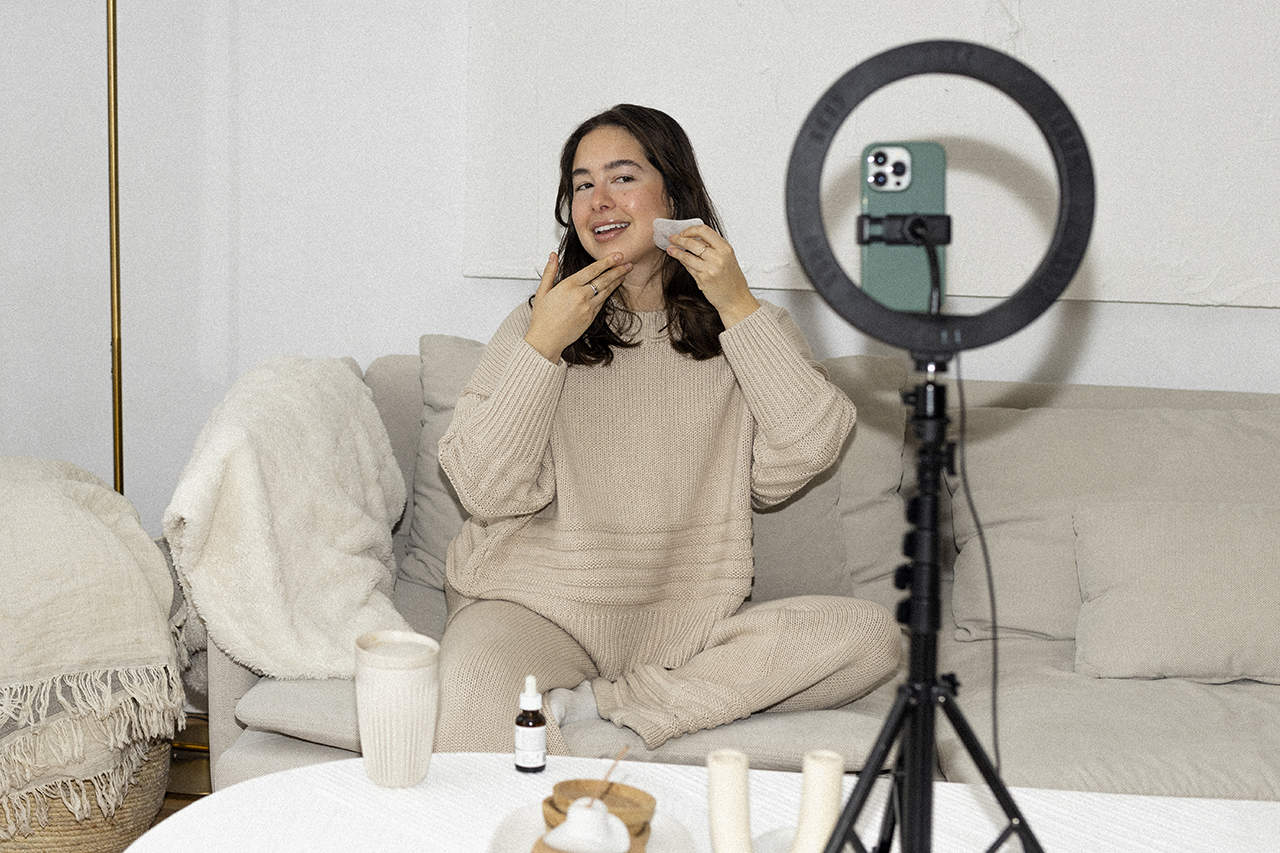
UGC (or user-generated content) is commissioned by brands who want promotional content for their product or service that looks authentic, but doesn’t cost as much as a typical influencer marketing campaign. This is a great niche for Shorts creators looking to monetize, no matter how many subscribers you have.
Since brands looking to work with a UGC creator aren’t interested in their audience, but rather their ability to create engaging, high-quality content that feels organic, you can tap into this revenue stream even if you’re a beginner YouTuber and still growing your channel.
How much can you make from YouTube Shorts monetization?
With many of the monetization methods listed above, the only limit to your income is how much work you’re willing to put into them. For Shorts ad revenue-sharing, though, your earnings can change month to month depending on your videos’ performance, and how big the Creator Pool gets.
A number of creators have gone on record with how much they’re able to make through Shorts feed ads. Let’s take a look.
In March 2023, YouTube expert Roberto Blake shared his insights from working with other creators, stating that 1 million Shorts views would tend to get you $100.
Another creator, CaffeinatedBlogger, revealed that he earned $31.70 for a Short that brought in 1.2 million views. Meanwhile, in the clip below, three creators share that their YouTube Shorts earnings range from a few pennies to $120.
To sum it up, even when your Shorts are getting millions of views, the returns from Shorts ads still seem to be small.
Bottom line
If you want to earn a decent income from YouTube Shorts, relying only on Shorts feed ads and other YouTube monetization tools won’t cut it. Branch out and try some of the other methods listed above, such as selling your own digital products, partnering with brands, and joining affiliate programs.
Start monetizing YouTube Shorts!
YouTube Shorts aren’t just great for making your content more easily discoverable, but they’re also a way for you to generate income. As long as you have 500 subscribers, you’re eligible for some of the monetization options available through YouTube’s Partner Program. To enjoy all of the benefits of the YPP, though, you’ll need at least 1,000 subscribers.
However, remember that built-in monetization options on YouTube aren’t the only ways to make money from Shorts. Diversify and explore alternate ways to monetize your Shorts, like selling digital products, partnering with brands, and more.
Ready to make bank with YouTube Shorts? Get more tips from our YouTube Shorts Monetization Guide.
FAQ
Can I get monetized on YouTube Shorts?
As long as you have at least 1,000 subscribers and 10 million Shorts views in the past 90 days, you can monetize your YouTube Shorts through all monetization features in YouTube’s Partner Program.
There’s also a more accessible tier, for which you’ll only need 500 subscribers, three uploads over the last 90 days, and either 3,000 watch hours or 3 million Shorts views. With this tier, however, you’ll only be able to access YouTube’s fan funding features, and to promote your own products through YouTube Shopping.
How much does YouTube pay for 1,000 views on Shorts?
Short answer? A few pennies.
Long answer: that depends on your RPM, or revenue per mille, which calculates how much you’re getting paid for every 1,000 views. Some creators have reported RPMs around $0.04, while others say the highest RPM they’ve seen is $0.07.
How much do you get paid for 1 million YouTube Shorts views?
Using similar figures above, a Short with an RPM of $0.04 would get you $40, while one with an RPM of $0.07 would pay $70.
Can I monetize YouTube Shorts without 1,000 subscribers?
You need at least 1,000 subscribers to be eligible for all monetization features available through
the YouTube Partner Program. That being said, you can still access some of them with only 500 subscribers.
And even if you don’t have that many subscribers, you can still making money with YouTube Shorts, like using them to promote your digital products. Get our YouTube Shorts Monetization Guide to learn more!
Follow The Leap on TikTok, Instagram, and YouTube for more monetization tips for creators. We also make a newsletter.

